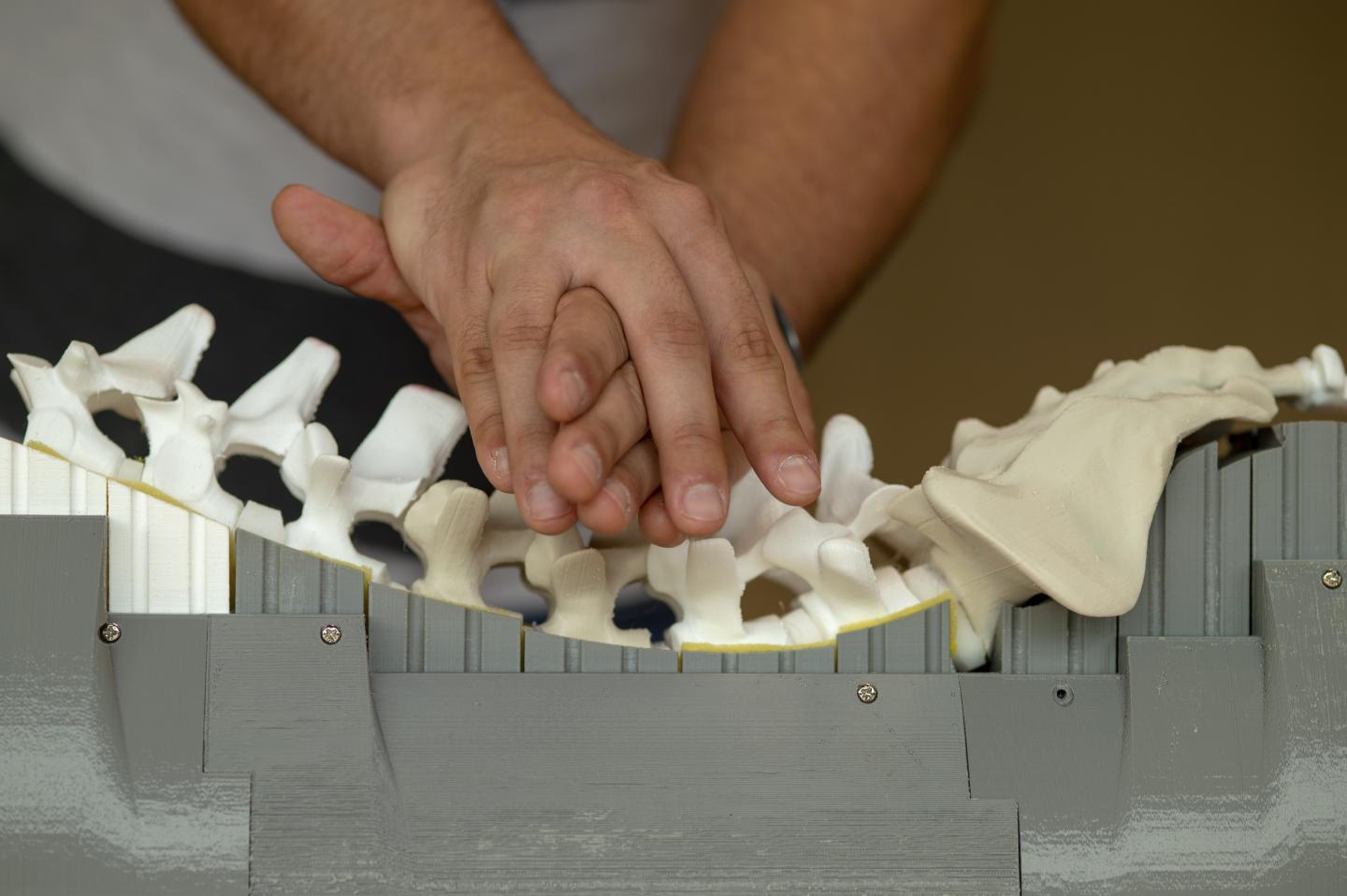A new tool to help physiotherapy students master complex fine motor skills needed to assess and treat patients suffering physical conditions, such as back pain and spinal cord injuries, is being used at the University of Melbourne

Credit: Image: Sarah Fisher, University of Melbourne
A new tool to help physiotherapy students master complex fine motor skills needed to assess and treat patients suffering physical conditions, such as back pain and spinal cord injuries, is being used at the University of Melbourne.
Developed by researchers in the University’s School of Computing and Information Systems and the Department of Physiotherapy, the device – SpinalLog – looks and feels like a human spine.
Using smart foam sensors, SpinalLog measures the pressure being applied to the spine by the student’s hand or fingers during a simulated assessment.
This information is then displayed on a 3D spinal model depicted on-screen, providing real-time visual feedback on the pressure pattern and technique used to mobilise the spine.
University of Melbourne Human-Computer Interaction lecturer Eduardo Velloso, who helped design the device, said SpinalLog offers students a safe way of practising their skills.
“Traditionally, to teach these skills, the instructor demonstrates a force pattern on a volunteer and asks students to practice on each other by replicating the moment,” Dr Velloso said.
“However, because these movements are very subtle, it is difficult for students to obverse them fully. Similarly, when students perform the movements themselves, it is difficult for instructors to provide feedback based on what they can see.”
Preliminary tests show the visual feedback has a huge impact on students’ ability to replicate the force pattern demonstrated by the instructor.
University of Melbourne physiotherapy senior lecturer David Kelly said SpinalLog represents the real-life conditions of a human spine suffering different levels of stiffness, bringing the clinic, to the classroom.
“Students get clear and immediate feedback on an authentic feeling spine,” Dr Kelly said.
“This means they get a better experience; they learn faster and are able to mimic what the instructor is teaching them, making them better prepared for the sorts of techniques that they’ll need as practitioners.”
This research won the Best Paper Award at the International Conference on Tangible, Embedded and Embodied Interactions in the US, 17 – 20 March.
###
Watch SpinalLog in action: https:/
Media Contact
Holly Bennett
[email protected]
Related Journal Article
http://dx.




